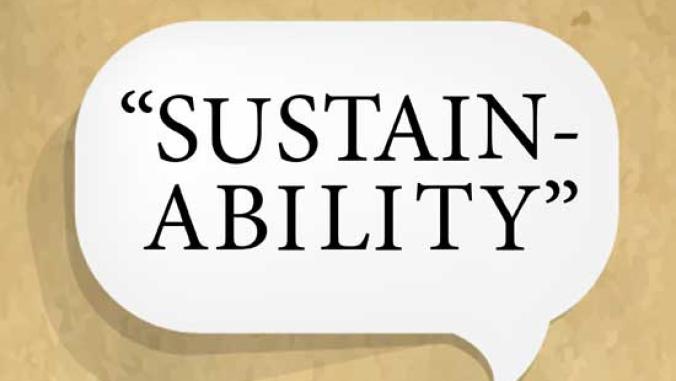When bad things happen to good, sustainability-minded companies
<p>Some kernels of advice on what to do when a well-intentioned company comes under scrutiny.</p>

While we don’t often hear about it, it’s not totally unexpected that a business pursuing sustainability gets hit with an “old economy” pollution problem and has to deal with it. For example, it may inherit an unpleasant surprise from a previous owner, or through the actions of long-departed management. I’ve seen nothing about this kind of thing in the sustainable business field, so it looks like some guidelines for getting through it — and in a sustainability-oriented way — are due.
What brought this to the fore was an article in the November 22 “You’re the Boss” column in the New York Times business section. It featured a small business with a problem which is also struggling for a solution. Readers are asked to submit ideas to help the company. This column doesn’t usually write about sustainability, so I was motivated to try to help, and in a way that would also apply to other sustainability-pursuing companies going through something similar.
In this particular column, "A Family Farm's Crisis: Its Rice Contains Arsenic," Eilene Zimmerman discussed a sustainability-pursuing rice-grower, Lundberg Family Farms, and recent findings from Consumer Reports that arsenic, a carcinogen, was found in “rice and many rice products.”
While others in the rice industry were hit with this too, Lundberg has a particular set of challenges if it’s to live up to its values. The company is confused about what to tell its anxious customers, and what to do about the arsenic contamination. It appears from Zimmerman’s column that this company has already passed through an initially reactive, defensive, “Hey, it isn’t just us” approach, and is prepared to take a more proactive, science-informed strategy, consistent with its values — if it could figure out what that strategy should be.
I entered a few suggestions in the “Comments” section, but was limited by space there. Here's my full take on it: 10 suggestions for any sustainability-pursuing company that finds itself in a difficult spot like this. I've used the experience of Lundberg Family Farms as a way to develop these suggestions. Certainly, not all of the specifics about the Lundberg case apply to others, but most of the following guidelines should.
Blackboard image by Pixelbliss via Shutterstock
1. Don’t play defense. And don’t punt to your industry’s trade association. These are traditional strategies, but — as you probably realize — it’s not who you are. As you learn more about the problem, don’t minimize it in your communications, unless you can really show (from multiple perspectives) that it really is an overstated issue and/or is now under control.
2. Utilize your beyond-transactional relationship with customers, reinforced by your we-really-do-care attitude. As an experienced sustainability-pursuing company, you’ve probably developed this form of equity. You’re ahead of other companies that have accepted sustainability but may have a more checkered past to overcome, or whose PR departments are still sending out mixed messages. This is the time to call in this chit. Ask your customers to stay with you as you work this out, that you need them now as never before. Explain that you didn’t create the problem, and there will be greater benefits than just for you and them (see below) when the problem is resolved.
3. Don’t be afraid to revise your approach, both the substance and how you communicate it. Don’t think you can focus on only one or the other, as some are telling you. You need to do both.
4. Mind the science, and while aiming for simple, don’t oversimplify. It’s not always easy to understand the science behind an issue, and may be impossible to get it across in 30 seconds to customers who only want to know “Will eating rice kill me?” There may be no simple way to provide the answer and assurance they seek, but do the best you can. However, don’t assume that people can’t learn new things.
5. Be transparent. As you strive to mitigate the arsenic content of your products, show the data in a meaningful and imaginative way on your website. Be up front with the failures, and the interim successes will have continued credibility.
6. Leave the land better than you found it, even if you have to stretch to find a way to do this. I’m guessing the problem stems from pesticide use on the land for agriculture in the years before Lundberg purchased the farm, or the problem may even have been naturally occurring. Regardless, don’t use this as an excuse. Land is special. Figure out which parcels are the most contaminated, take these out of circulation while (hopefully) you figure out how to detoxify these and the less severely contaminated plots. If you plan to mitigate in other ways, such as by asking someone else in the supply chain to add a process, or even asking the customer to take a new protective action from their end, don’t do these as alternatives to what you can do for the land. Repairing the land would actually show — in a new way that no one expected — that you are still being consistent with one of the main, historically resonant tenets of the sustainability field (and which you probably already believe in): “Leave things better than you found them.”
7. Catalyze other sustainable technologies. As another way to improve the land, both yours and potentially others’, use at least part of the set-aside land as a pilot to test an uncertain, but promising sustainability-oriented remediation/restoration technology. That way, you may also be advancing the prospects for a very different, infant business, while also enhancing yours. If there are competing technologies which also need piloting, ask other rice farmers to utilize these other ones on their lands. Get help to make sure the testing protocols are acceptable, and then compare notes on the results.
8. Don’t make things worse, if you really can’t remediate. Be sensitive to the future use of these lands. Don’t let some future owner or subsequent user do something inappropriate on them. But just roping them off as a kind of permanent post-nuclear accident abandonment zone should be the absolutely last resort. Capping the land, which leaves the pollutant there, but with less exposure, should be the second-to-the-worst choice. Tell your customers you’re doing all this even though you’re not required to.
9. Help others, raise the bar, and get things flowing again. When you’ve got a grip on the problem and the best approaches to it, help the rest of the industry through a trade association or other alliance. Lobby government agencies to issue the health standard for arsenic in food, which currently does not exist. This will help show your customers that by helping you now, they can affect a much greater positive change. Also tell Consumer Reports, which reported on the original problem.
10. Seek like-minded allies. Ask sustainability-oriented chefs, writers, retailers, and other organizations to back you on all this.
Remember: It’s likely others will be watching how you do, so be conscious that you may be creating a model for other businesses facing similar types of problems.



